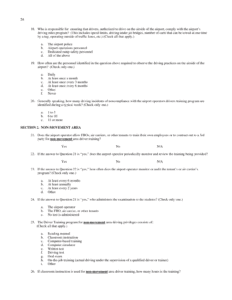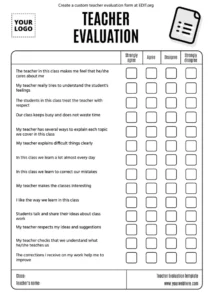Every day in the classroom is a unique adventure, filled with incredible learning moments and, let’s be honest, a few challenging ones too. As educators, we pour our hearts into helping students grow academically and personally. Part of that journey often involves navigating various behaviors, from minor disruptions to more significant concerns that require careful attention. Keeping track of these moments can feel overwhelming, especially with everything else on your plate.
That’s where a well-designed behavior log can become your best friend. Imagine having a clear, organized system that helps you record, monitor, and understand student behavior patterns without adding extra stress to your busy day. This simple yet powerful tool is more than just a record-keeping device; it’s a foundational element for fostering a positive learning environment and ensuring every student gets the support they need.
Why a Behavior Log Template is a Game-Changer for Teachers
Think about the sheer volume of interactions and incidents that occur in a classroom over a single week, let alone an entire school year. Trying to recall specific details about a student’s behavior weeks or months later can be nearly impossible. This is precisely why a structured approach to documentation is so invaluable. A reliable behavior log template provides a consistent framework, ensuring you capture all the necessary information accurately and efficiently, moving beyond just anecdotal memories.
Having a consistent record allows you to move from subjective observations to objective data. This shift is crucial when discussing student progress, or challenges, with parents, administrators, or support staff. Instead of saying, “Johnny has been disruptive,” you can present concrete examples, dates, and observed patterns, which makes conversations more productive and solutions more targeted. It gives everyone involved a clearer picture and helps to create a united front in supporting the student.
Streamlining Documentation and Communication
A good behavior log template helps teachers document specific incidents as they happen. This real-time recording means details are fresh in your mind, leading to more accurate and comprehensive entries. For instance, if a student consistently struggles with staying on task, quick notes in your log can highlight the exact times, triggers, and the effectiveness of your interventions. This granular data is incredibly powerful for developing individualized behavior plans.
Moreover, these logs become an invaluable resource for parent-teacher conferences. Instead of vague reports, you can share concrete examples of behavior, your responses, and any improvements or persistent challenges. This transparency builds trust and empowers parents to support strategies at home, creating a consistent approach that benefits the student most. It also serves as evidence for administrative reviews or when seeking additional support services for a student.
Identifying Patterns and Informing Interventions
The true power of a consistently used behavior log template for teachers lies in its ability to reveal patterns over time. A single incident might seem isolated, but when you track multiple entries for the same student, you might start to notice trends. Perhaps certain behaviors always occur during a specific subject, after lunch, or when a particular peer is nearby. Identifying these antecedents or triggers is a critical first step in addressing the root cause of the behavior rather than just reacting to the symptom.
Once patterns are identified, you can make data-driven decisions about interventions. Is the student seeking attention? Are they struggling with a specific academic task? Are they experiencing social difficulties? Your log entries provide the clues needed to formulate effective strategies. This might involve adjusting classroom seating, implementing a visual schedule, teaching coping mechanisms, or collaborating with a school counselor. Without this organized data, it’s often a shot in the dark, but with it, you’re equipped to make informed choices that genuinely make a difference in a student’s learning experience and overall well-being.
Crafting Your Own Effective Behavior Log Template
While there are many pre-made options available, creating or customizing a behavior log template to fit your specific classroom needs can be incredibly beneficial. The most effective templates are those that are easy to use, comprehensive enough to capture critical details, and flexible enough to adapt to different situations. The goal is to make documentation a seamless part of your daily routine, not an added burden.
Consider what information is most important for you to track. Every teacher’s classroom dynamics and school’s requirements might differ slightly. A template that works for a kindergarten classroom might look different from one used in a high school setting. Think about the types of behaviors you most commonly observe and what information would be most helpful for you, your colleagues, and families to understand the student’s needs and progress.
To ensure your behavior log template for teachers is robust and useful, here are some key elements you might want to include:
- Date and Time of Incident
- Student’s Name (or a simple identification code)
- Location of Incident (e.g., classroom, hallway, playground)
- Description of Behavior (objective, observable actions)
- Antecedent (what happened immediately before the behavior)
- Teacher’s Response/Intervention
- Student’s Response to Intervention
- Consequence, if any
- Follow-up Actions Required (e.g., parent contact, counselor referral)
- Notes/Additional Observations
Remember that the language used in your log entries should always be objective and descriptive. Instead of writing “Student was rude,” describe what the student said or did that was perceived as rude. This professional and factual approach ensures clarity and avoids misinterpretation, making your documentation a credible and powerful tool. Whether you opt for a digital spreadsheet or a physical binder, consistency in how you fill it out is paramount for its long-term effectiveness.
Implementing a consistent system for tracking student behavior can truly transform your classroom management strategy. It empowers you with the data needed to understand your students better, tailor your responses, and communicate effectively with all stakeholders. This proactive approach not only supports individual student growth but also contributes to a more harmonious and productive learning environment for everyone involved.
Ultimately, by dedicating a little time to organized documentation, you’re not just logging incidents; you’re building a comprehensive picture that illuminates paths to success for every child. This valuable practice helps foster a classroom where challenges are met with informed solutions and where every student feels supported on their journey to reach their full potential.



